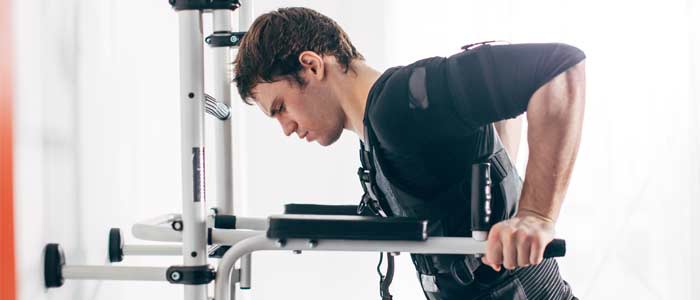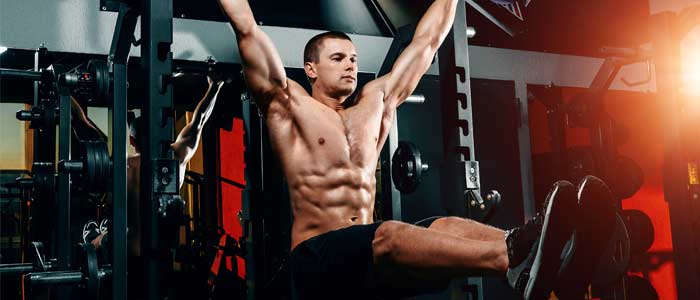The 5 Best Power Tower Exercises
20th Sep 19

Power towers are up there with the best equipment on the market. Whether you’re looking to make an awesome home gym or you’re training at a commercial gym, there’s room for it in your workouts. Power tower exercises use body weight primarily, but with the right additions, like weighted clothing, it has room for you to grow exponentially. That’s just what you need in a good gym.
The power tower isn’t short on its range of exercises either. We’re going to run through a few of them with you that, when put together, can actually give an incredibly effective full-body workout (although it may be difficult to start with).
Let’s take a look:
Want to move fast? Jump to the right section below.
Tricep Dips

One of the most famous power tower exercises is the tricep dip. The tower uses its arms to allow the user to rest your hands or arms on the grips. From there, you extend your triceps to raise your entire body upwards and relax them to return to the starting position, as is with all variations of the exercise. It’s actually also known as a dip tower because of how effective it makes these exercises.
The power tower usually has padding for your hands to make it as comfortable as possible to do them, and it also means that it can really isolate the triceps as there is no other point of contact from the body to the floor. All of the weight is dependent on the triceps, and that’s hard to replicate.
This can be varied slightly more by implementing a forward lean, making the chest responsible for some of the workload too, but that’s a whole other exercise.
Pull-Ups & Chin-Ups
Next up, and quite probably the second most common exercise for the power tower is the pull-up. All it requires is the higher bars at the top of the machine, leaning forwards to allow the user to grab them if they can reach them (and jump if not).
Once you’re on the bars, things get interesting. Using pretty much every muscle in your body (mostly your upper back), you pull your weight up to the bars until your chin crosses. Once you’re there, you’ve managed a solid rep. relax and finish your set! (Make sure your form is right, too, though).
Depending on the style of the tower, this also may accommodate different variations of pull up as well, ranging from the standard wide grip pull up or the more simplistic chin-up. They’re both incredible power tower exercises.
The difference is that your hands are facing toward you instead of away and are in a very close-gripped position. Chin-ups target the biceps much more than the back. Even on top of these two, though, there’s more to them. Try mixing up your grips and see which works best for your workouts.
Hanging Leg Raises

The last major exercise we’ll look at is leg raises. The leg raise is a very useful tool in the ab workout arsenal for the lower portion of the abdominal muscle group. It’s based on raising your legs to make your body into an L shape by lifting them until they are pointing straight in front of the body.
This is most effective if held for around a second or two before lowering and repeating. That gets you the best possible contraction without resulting in fatigue too early. On top of that, it stops the momentum from building and renders the exercise almost worthless. (Pro tip: Get your feet higher than your waist for proper ab contraction).
This, again, is an extremely strenuous power tower exercise and could be very difficult to perform if the user is not already used to training their abdominal muscles. If you can’t quite manage yet, it can be replaced with knee raises instead of leg raises. That way, only the knees are lifted upwards, so it makes a position similar to sitting in a chair. This variation makes the exercise slightly easier for those struggling with the leg raise.’
Ultimately, it’s still an incredible feat of abdominal and core strength, and it’s not going to be an easy workout. The results do speak for themselves, though, and by adding some diagonal movement into your raises, too, you can enter oblique territory as well—just some food for thought.
Push-Ups
Many of these towers are also equipped with some kind of features at the base as well. This doesn’t apply to all towers, but many do have handle features to allow push-ups to be performed on the tower’s base.
This means that rather than only performing standard push-ups in your routine, you can also use these handles to add variation to the exercise, making them *technically* a power tower exercise!
Push-ups and an incredibly effective chest exercise, and more than that as well. You can change them up with a number of push-up variations (like these). Mix them up and see how great your bodyweight workout can really be.
Bodyweight Benefits
So those are the exercises that the power tower can offer you, but what makes them really special is how they adapt your body weight to make an awesome workout. That has its own benefits too.
One of the first benefits is the reduced injury that using body weight has to offer you. It isn’t danger-free, of course, but without huge and unnatural weights, the risk is reduced.
The intensity and difficulty of the exercises have their own pros and cons as well. Your body weight can’t be made lighter than you may like. That causes issues with beginners above all else, but it’s still more than achievable to use them as a starting point in weight training. Adding weights allows them to become really advanced as well. They can suit most needs; just be patient to start with!
Ultimately, power tower exercises can be an incredible way to work out if you use them to their full potential. They’re hard to start, but you will see really big improvements as you progress, with functional strength increasing too. Add weights, and you’ll see even more growth.

Before beginning any exercise or nutrition program, consult your physician, doctor or other professional. This is especially important for individuals over the age of 35 or persons with pre-existing health problems. Exercise.co.uk assumes no responsibility for personal injury or property damage sustained using our advice.
If you experience dizziness, nausea, chest pain, or any other abnormal symptoms, stop the workout at once and consult a physician or doctor immediately.









